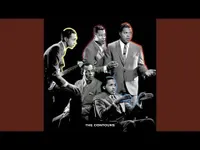🎶 Overview and Origins
- Released: 29 June 1962
- Label: Gordy (Motown)
- Written & Produced by: Berry Gordy Jr.
- Genre: Rhythm & Blues, early Rock & Roll
- Chart Success:
- #3 on Billboard Hot 100 (1962)
- #1 on Billboard R&B chart
- Re-charted at #11 in 1988 after Dirty Dancing
Initially intended for The Temptations, the song was recorded by The Contours when the Temptations missed a studio session. Berry Gordy asked The Contours to try it, and their energetic delivery turned it into one of Motown’s earliest hits.
https://www.youtube.com/watch?v=9v0ea8_EJXA
https://www.youtube.com/watch?v=aCioEEHmHA0
https://www.youtube.com/watch?v=YfLjUvHD34k
https://www.youtube.com/watch?v=epPiqIUlhPU
🎼 Musical Arrangement Breakdown
1. Vocal Style
- Lead Vocals: Billy Gordon delivers raw, explosive vocals with a gritty edge.
- Backing Vocals: Call-and-response harmonies typical of early Motown.
- Spoken Intro: Sets the emotional tone with a direct appeal:
“You broke my heart ’cause I couldn’t dance...”
2. Instrumentation
Performed by The Funk Brothers, Motown’s legendary house band:
- Bass: James Jamerson – syncopated and driving, anchors the groove.
- Drums: Benny Benjamin – energetic, danceable rhythm with snare-heavy backbeat.
- Piano: Joe Hunter – rhythmic comping and fills.
- Guitar & Horns: Add punch and texture, especially during the chorus.
3. Structure
- Intro (spoken)
- Verse 1 – sets up the emotional conflict
- Chorus – explosive, danceable hook: “Do you love me? (Now that I can dance)”
- Verse 2 – references popular dances (Mashed Potato, Twist)
- Bridge – builds tension
- Fake Ending – a brief pause before the final chorus
- Outro – fades with repeated chorus
4. Style and Influence
- Combines R&B vocal intensity with rock & roll rhythm.
- Dance-centric lyrics reflect 1960s youth culture and social dynamics.
- Inspired by Hank Ballard & The Midnighters’ energetic style.
🕺 Cultural Impact
- Featured prominently in 1987’s Dirty Dancing, introducing it to a new generation.
- Covered by The Dave Clark Five and Brian Poole & The Tremeloes, both charting in the UK and the US.
- Became a symbol of Motown’s early success and the dance craze era.
